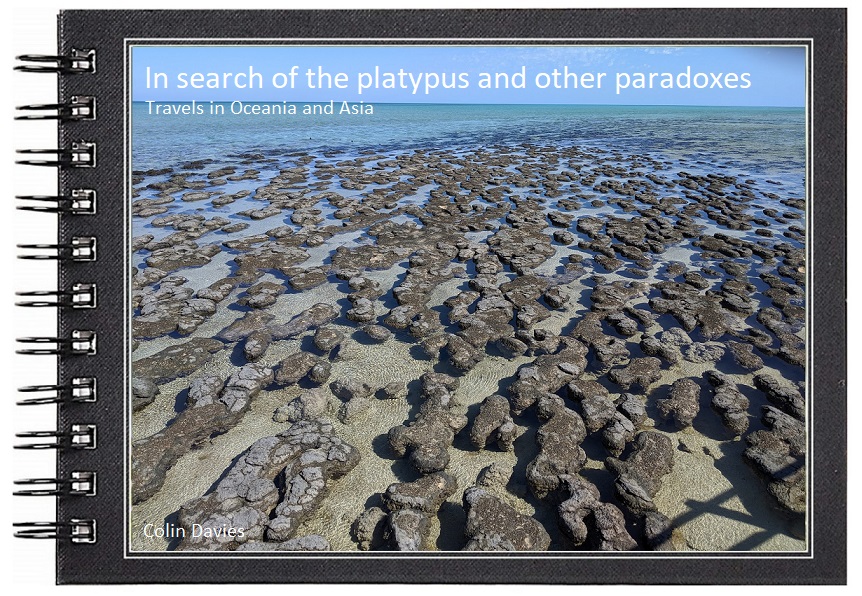 |
| Photo: Alpine bog. |
 |
| Photo: The snow gum forest. |
 |
| Photo: Temperate rainforest. |
In this post I'm going to concentrate mainly of the sub-alpine bog, because this is the area I found most fascinating. This is a very different habitat to that which we found on the alpine plateau below Cradle Mountain. Even though it was at roughly the same altitude, around 1250m, the habitat at Cradle mountain was much more alpine and was dominated by bryophytes and alpine plants such as pincushions, whereas on this walk it was dominated by bryophytes and dwarf shrubs. To make a loose comparison with habitats in the UK, the habitat we encountered at Cradle Mountain was a montane community, whereas the habitat I am discussing here is a dwarf shrub bog community.
The only tree that we saw in the sub-alpine bog was pencil pine Athrotaxis cupressoides. This is what's known as a Gondwanan species, in other words a species which originated on the ancient supercontinent Gondwana, with pencil pine now existing only in Tasmania.
Pencil pine is endemic to Tasmania and is found in areas over 800m, often in bogs or other wet places due to its intolerance to fire. Individual trees can live to 1200 years but the trees are known to clonally reproduce through suckering, with some whole stands likely to be genetically identical. This means that such stands are genetic clones which are likely to be thousands of years old.
This is one of my favourite plants, snow gentian, which we also saw on the alpine plateau just below Cradle Mountain.
The sundew is Drosera arcturi which is endemic to Australia and New Zealand. Not sure about the sphagnum sp.
Sprengelia montana, related to the Ericaceae family, this is a type of heather.
Baeckea gunniana, a plant of the myrtle family.
Possibly Senecio pectinatus.
Pimelea sericea.
Ozothamnus ledifolius
Mount Mawson Pine Pherosphaera hookerianna. Nice to see this since we were actually on the lower slopes of Mount Mawson, this is a dwarf conifer which is endemic to Tasmania and grows at about 30 known sites above 600m.
Looking down to Lake Seal.
A little lower down is the fabulous snow gum woodland. Eucalyptus pauciflora is endemic to eastern Australia and Tasmania and unlike it's cousins, the forest giants in the temperate rainforest below which usually grow to phenominal heights with telegraph pole like straight trunks, these trees are small and gnarled, perhaps recalling some ancient yew tree woodland in the UK.
These trunks must tell a fascinating story.
Scoparia Richea scoparia.
Tetracarpea tasmanica, which, as the name implies is endemic to Tasmania.
Cyathodes straminea which has the wonderful English name of false-whorled cheeseberry.......
......and here are the berries.
Olearia phlogopappa.
Melaleuca squamea.
Mountain rocket Bellendena montana.
In the temperate rainforest the vegetation is much lusher and the Eucalyptus trees need to grow quickly to get to the light.
In Tasmania this is known as Swamp Gum, in Victoria it is Mountain Ash, but whatever the common name, Eucalyptus Regnans is the tallest flowering plant in the world. I've seen this species before in Victoria and wrote a blog post about it at the time.































No comments:
Post a Comment